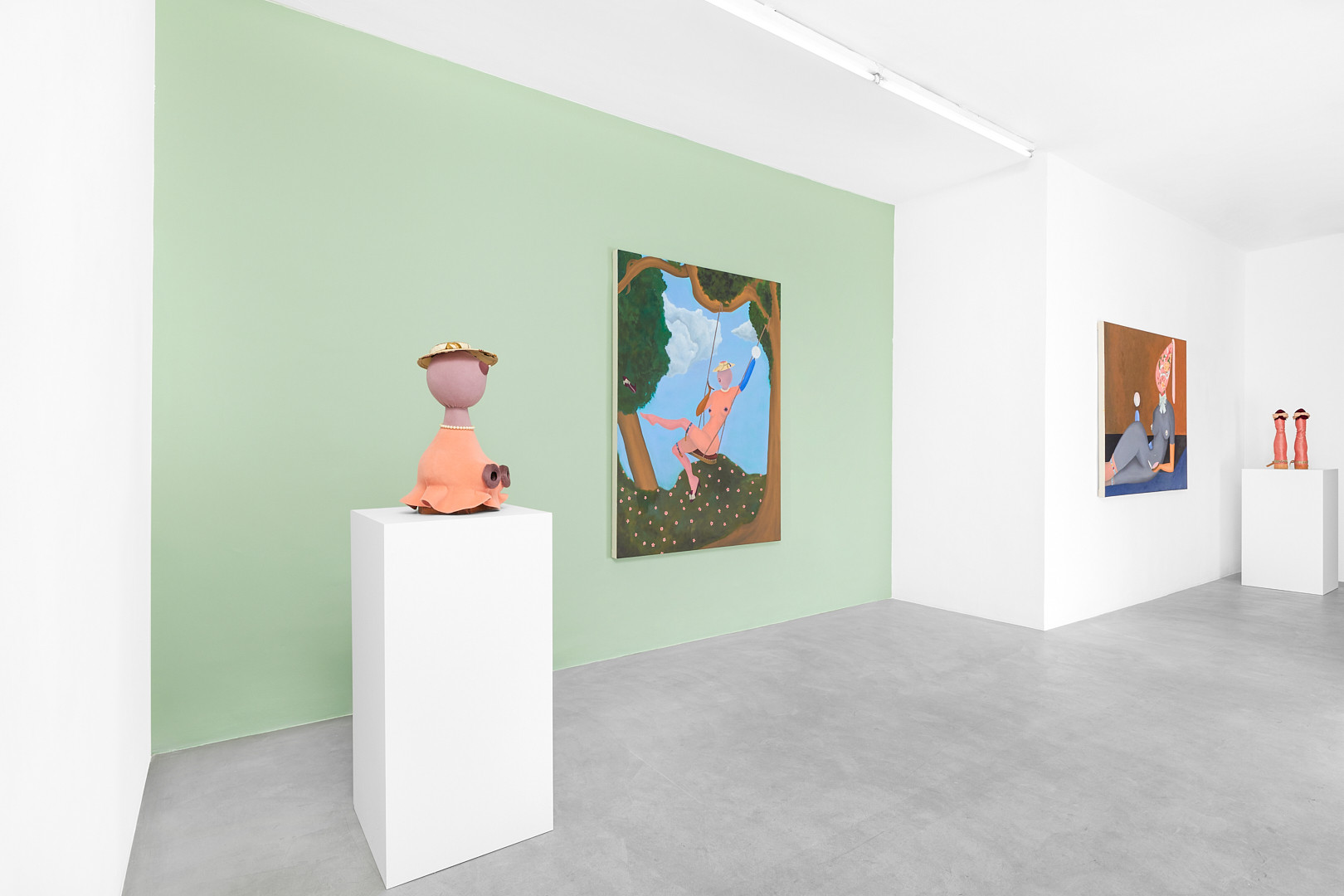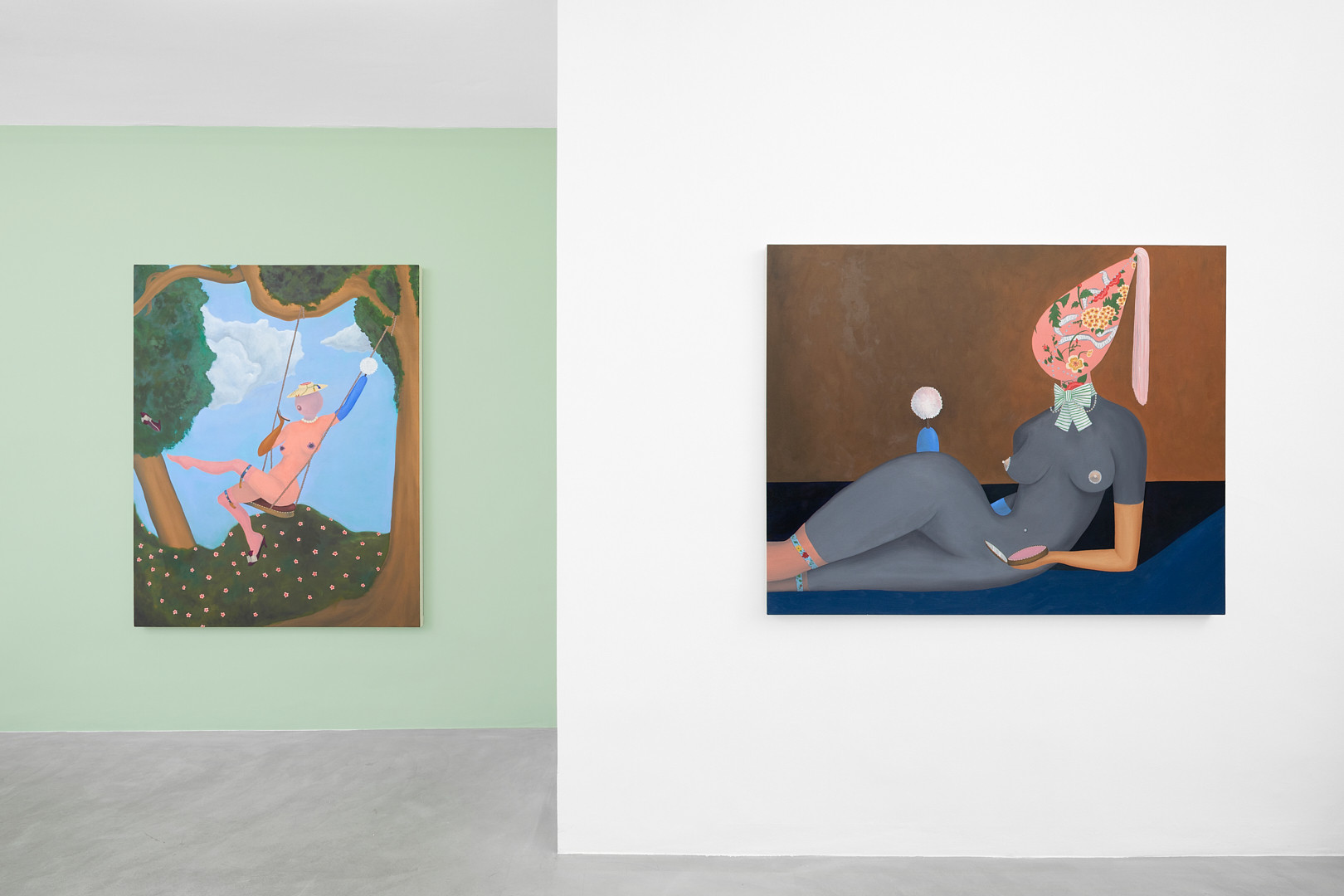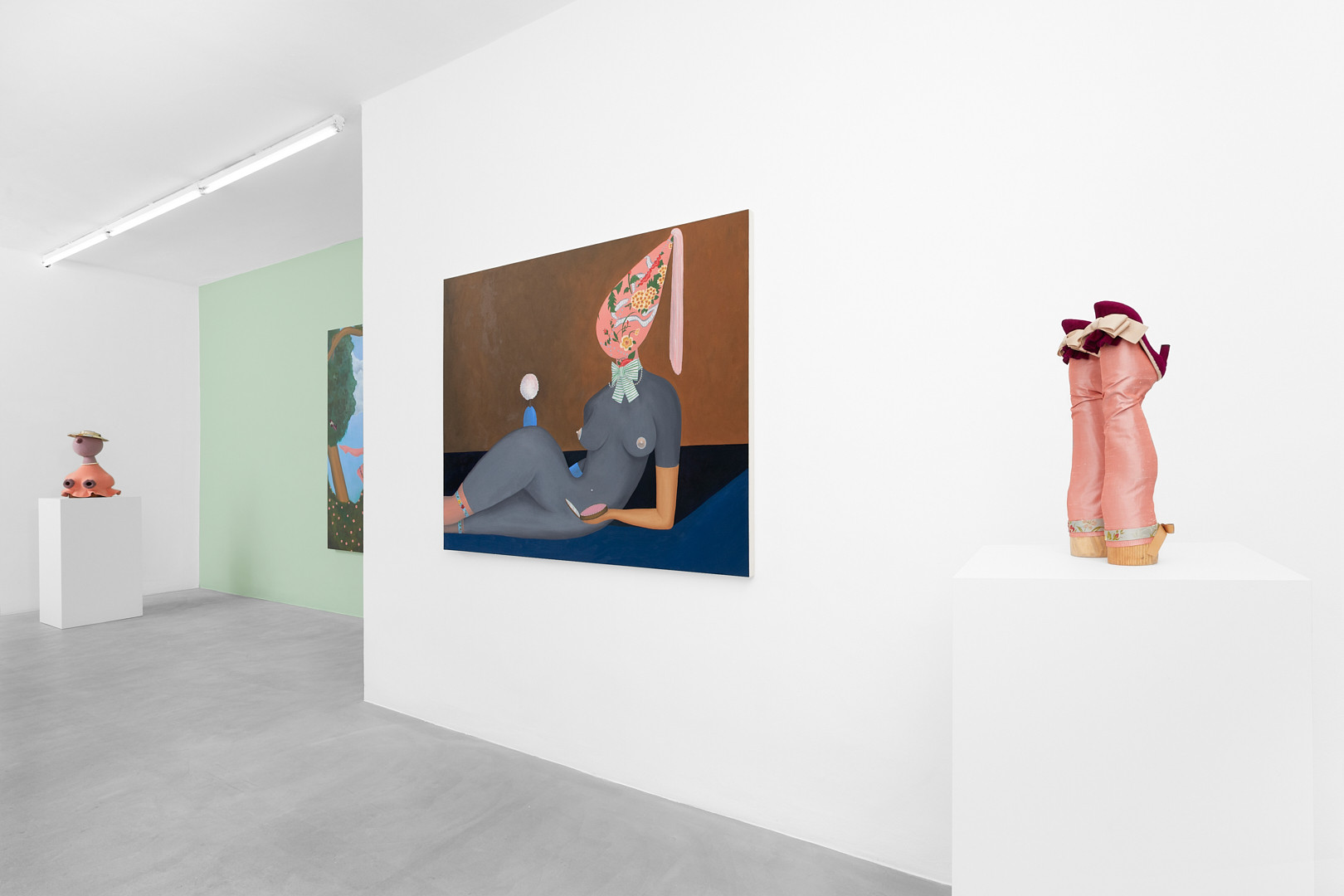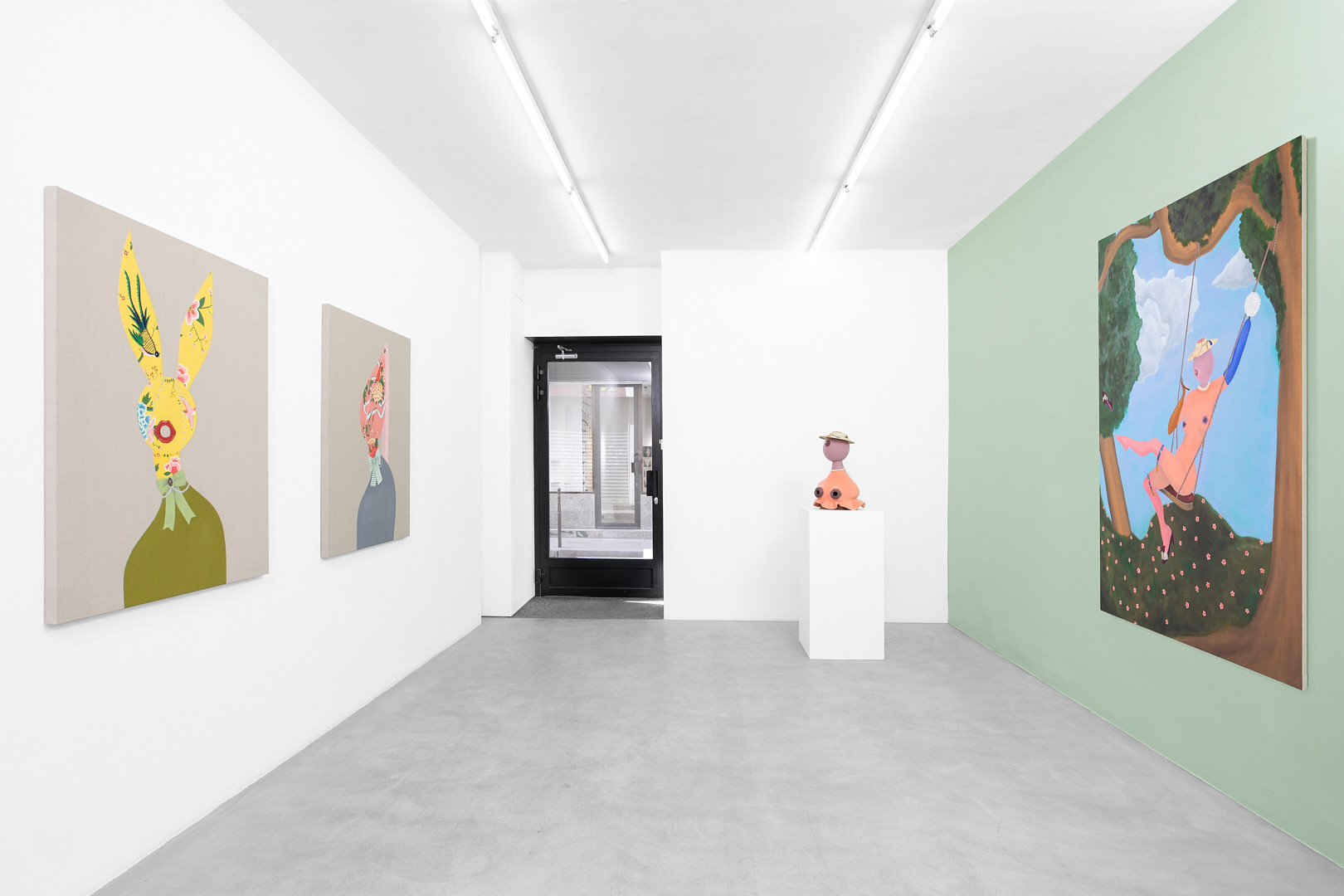




















© Credits photo: Thomas Marroni





















In Ryan Wilde’s “Reflets dans la galerie des glaces”, we meet a whole feminine and whimsical group of characters: a “Lapine” confident of her charms, a Madame de Pompadour dressed for battle, the Three Grace flirting… Marie Antoinette is not far away and we imagine her being the head of this charming parade.
As Ryan Wilde explains, she wanted to stage “the American interpretation of French beauty, all in excess and humor.” The tone is casual, without pretention. Voluntarily girly and even silly. Just like the colors — from yellow to pink — or the wallpaper patterns. In these “mise-en-scene” of a masquerade, visions of innocence go along with coquetry. The cute costumes suddenly become protection. As for the parts of the woman’s body, they appear fragmented, enlarged or inverted. The mouth takes the place of the nipples, the breasts curl up in the palms of the hands. Only the eyes are absent, as if they were the only ones that the artist did not want to give us.
Behind what seems to be a series of childish games, Ryan Wilde reveals her inspiration. Found in her readings of feminist writings. Such as the iconic essay by the English psychoanalyst Joan Rivière, Womanliness as a masquerade, published in 1929, which overthrows the usual attributes of femininity — from colors to funny faces, from sweetness to a supposed innocence — to turn them into shields and weapons, against men’s self-proclaimed violent nature.
And the most famous room in the Palace of Versailles is not a simple decor for the artist, but again a reference from another reading. Simone de Beauvoir’s Second Sex. In response to Lacan’s “mirror stage” where a man manifests self in front of his own image, Simone de Beauvoir defends, for the woman, the learning and the construction of herself by looking at the image of others, allies of the same sex…
Ryan Wilde shares a multitude of feminine visions. Women of power — political or sexual — capable of creating an image for themselves and then suddenly changing it. Proving that by manipulating their own attributes, they can manipulate society. And disrupt it.
La Lapine frees herself from the Playboy Playmate — a magazine for which Ryan Wilde’s father worked for twenty years as an illustrator and for which the artist feels a kind of love-hate relationship: hate for this temple of female imagery modeled and normalized by the male gaze, love for the possible reversals made in Playboy to the point where Wilde even drew the rabbit ears worn by Kate Moss on the cover.
Madame Boobhead becomes the ideal mother of conservative America. The pony-tailed Coquinette carries guilty desires within her. The Three Graces change innocent mythology into Sapphic frolic.
So much so that we can imagine Ryan Wilde, in her Galerie des Glaces, ending up multiplying into all these versions of herself, into all these reflections. Avatars and sisters protecting her deep intimacy and questioning femininity. Never unique, nor monolithic.
After studying in art school, Ryan Wilde was a hat designer for twenty years. And now she returns to the primordial gestures of her creation: painting and sculpting. Even if the sewing and the wooden hat molds are the same ones she now uses for her sculptures. Reminding us that the garment is the ideal tool to change skin very quickly. And, by making the costume an art, to disrupt our opinion.
Boris Bergmann